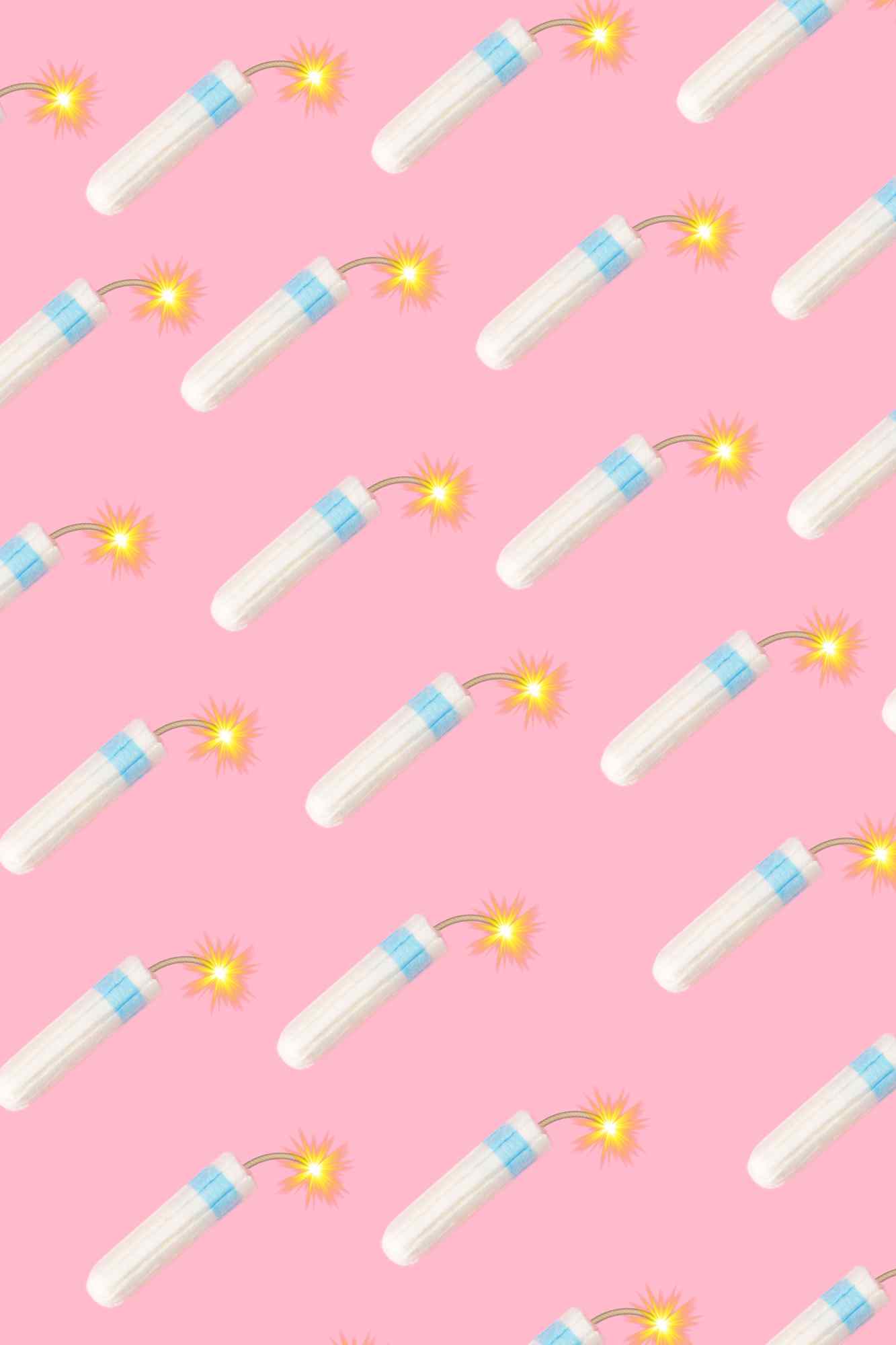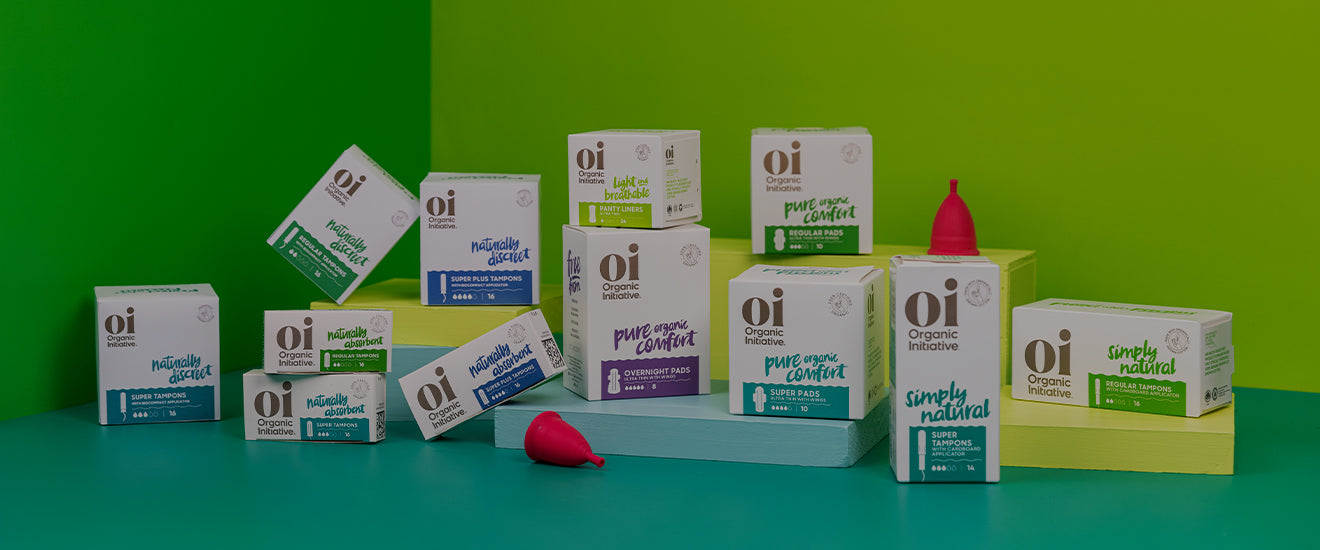
Two Recent Studies Have Found Possible Health Risks With Tampon Use. So, What’s The Real Story?
Original article via capsulenz.com
Over the past year, two studies have found the presence of toxic metals and also microplastics in tampons, raising the question: are there health risks with tampon use? We spoke to three women from the industry about what we can learn from these studies and the bigger questions that need to be asked in terms of what is in our tampons… and why has it taken so long to test them?
In July, a study came out of the US which found the presence of toxic metals like arsenic and lead in over a dozen mainstream tampon products. The immediate aftermath of that study – the first of its kind to test for metals in tampons – has had a big impact on period products, both in America and here in NZ, and added more interest to the question of whether or not tampons come with health risks.
The study, which was published in the scientific journal, Environment International, examined 30 tampons from across 14 brands and 18 product lines, including both organic and non-organic tampons, from three different countries. It found traces of 16 different metals and elevated levels of lead and arsenic.
Considering how many people in the world get a period and use tampons, it’s little wonder the reaction to the study was a) ‘holy shit?’ and b) ‘what do you mean, this is the first time tampons have been tested for toxic metals?’
The ripple effects were felt in Aotearoa immediately. The first inkling that something had happened came over a weekend, when Kat Sprowell, the Chief Operating Officer of sustainable period care company, Hello Period, noticed a sudden spike in sales on the website. Without warning, their orders suddenly tripled from the previous month.
“We couldn’t really attribute it to anything else,” she says. When she first read the study for herself, Kat admits her initial reaction was horror. “Compared to some people, I was a fairly late adopter to reusable options,” she says. “When you know you’ve personally been using them, your first reaction is just ‘oh my god, what have I been putting in my body?!’ Then as you start to read a bit more about it, and get the context around it, you realise that some of the headlines are feeding that frenzy a little bit.”
Cause For Concern
After speaking to three different industry leaders on this matter, the answer to the question ‘Do tampons come with health risks?’ is more complicated than a series of stress-inducing click-bait headlines might lead you to believe.
Despite being used for decades, what is actually IN our tampons is still something of a new field of research, partly because anything to do with women’s health is generally overlooked and under-researched, and partly because it’s a case of “we don’t know what we don’t know,” says Dr Alison Heather, Professor of Physiology at the University of Otago.
“Nobody looked at a tampon and thought, ‘there might be endocrine disrupting chemicals in there,’” she says. “Nobody thought to even check.”
Dr Heather is the chief scientist at InsituGen, a research lab out of Otago University that was commissioned by Kiwi organic tampon range, Organics Initiative (OI), to do a smaller study into tampons in 2023. Instead of looking for toxic metals, they were looking for endocrine disrupting chemicals – and they found a lot of them. Just like the US toxic metal study, the InsituGen study also caused a stir when it came out at the end of 2023.
The initial aim of the study was very simple, says Clare Morgan, the CEO of OI who commissioned the study. One of the biggest drivers for customers changing their period-product buying habits is sustainability, so the team at OI wanted to put some numbers behind their product.
“We started testing to try and quantify how much plastic and synthetics, from an environmental perspective, were in our competitors’ products,” says Clare. “That way we could talk about how much plastic we were saving from going into a landfill.”
At that stage, she says, it didn’t even occur to her that microplastics would be an issue. “It was only when one of the scientists said, ‘Why aren’t we testing these for endocrine disrupting chemicals?’”
Dr Heather says she and her team decided to widen the investigation, checking both the OI products and a range of tampons available from the supermarket. The results were – like the US study from this year – quite surprising.
“I was hoping we would find nothing,” Dr Heather says. “What we found was that the Organic Initiatives tampons didn’t contain any estrogenic activity, but we did find that several of the brands did.”
That was in the initial test they ran last year; now, the same team is doing further research, looking at a wider range of products, including moon cups and period underwear. “What we’re finding is that 1/3 of the products we’re testing have estrogenic activity,” Dr Heather says.
What Are EDCs & Why Do They Matter?
So, why is this a problem? In simple terms, endocrine disrupting chemicals (EDCs) are microplastics, which are found in all sorts of different things – our drinking water, water bottles, make-up. But tampons are an internal product, and the tissue in the vagina is designed to be highly absorbent, so an exposure to EDCs can be more serious, if proven.
“If we’re putting a tampon, for five, six days a month, for many years, into a highly absorbent area, when we know that EDCs can accumulate in the body… this is something that is of concern,” says Dr Heather.
EDCs are of particular concern for women, because our hormonal systems are so “finely tuned”, Dr Heather says. Our estrogen levels fluctuate throughout our menstrual cycle and have a powerful effect on our overall health – not just the reproductive organs, but also our bones and our brain. If you have EDCs in your body, at concentrations that are high enough to interfere with that natural estrogen cycle, then that system can break down.
This, as Dr Heather calls it, is the giant “piece of the puzzle” that she and her team are trying to prove: does the vagina absorb enough of these EDCs, at a high enough concentration, to create enough of an imbalance to alter the amount of estrogen in the body?
It is a “watch this space” area of science, she says – and governments around the world are paying close attention to the findings that she and her team are currently working on. The stakes are high: If 1/3 of the tampons on the market contain EDCs, and there’s evidence that EDCs can lead to endometriosis, certain types of cancer and certain types of infertility, then that missing link could have major repercussions for women’s health.
“We’re confident that what we’re detecting is real,” Dr Heather says of the research into tampons. “There’s something there that shouldn’t be there.”
Word Of Mouth Versus Scientific Results
Kat Sprowell, the COO from Hello Period, says that results themselves were only half the concerning part from the July toxic metals study. It’s the lack of interest until now about something that is so widely used by millions. If it was men that got periods, she says dryly, “these studies would have been done decades ago. That’s the part that we should be most alarmed and upset about; that it’s only just started to be looked at.”
She hopes that the furor around the US study will lead to more global studies that also look at the health benefits of switching to reusable products. “We hear from a lot of customers that [switching] completely changes the dynamics of their menstrual cycle – how heavy it is, how difficult it is to manage,” she says.
This is something we’ve written about before at Capsule. “Some women report they have less cramping, which is fascinating…” Kat says. “There’s so much we don’t know, and most of what we do know, it’s purely anecdotal.”
Kat says it would be amazing to back-up the hundreds of first-person responses they get with scientific results, particularly because sustainable products seem to be held at a higher standard in terms of industry regulations than their single-use equivalents, like tampons.
“There has been a lot of focus on regulating sustainable period products, and very little on disposable,” she says. “There isn’t much information on packaging, there isn’t a whole of transparency around materials and manufacturing.” The customers that come to Hello Period, she says, are very informed. “They want to know every detail about the materials we use, what the dyes are made of. So, it’s important that we can stand by our products and tell them exactly what they’re made of.”
Clare Morgan, the CEO from OI, agrees. The materials used in the OI products are held to the OEKO Tex Standard 100, which is very much industry speak, but means they are held to the highest standard possible, the same standard required for baby products.
There is a lot of awareness in the European Union and in America when it comes to microplastics. “When we were in the US in March, showing our new range of period underwear, the first question everyone asked us was are they free of PFAS?” says Clare of the ‘forever chemicals’ that have also been shown to be in some period products . “Whereas, if you bring up endocrine disrupting chemicals to Kiwis or Aussies, they look at you like you’re mad.”
When it comes to the tampon companies whose products are showing signs of EDCs, Dr Alison Heather, the lead scientist from the NZ study into tampon health last year, is quick to point out that this isn’t a giant conspiracy theory – all of the companies are following the government regulations that are currently in place. It’s a case of the regulations not being stringent enough, because the field of microplastics and EDCs is still so relatively new.
It’s hard to get regulations changed at this stage, however, because of that missing piece of the puzzle. “The key piece is missing, that these EDCs cause disease in any form,” Dr Heather says. “There is no evidence out there yet; there is speculation, there is association, but there is no cause and effect.” Without hard data proving that, there’s no real push to change the regulations… yet.
“But in the meantime, we knew cigarettes caused harm for a long time before something was done about it,” she says. “So, having sensible information out there for consumers is a good thing.”

No Greenwashing.
Period.